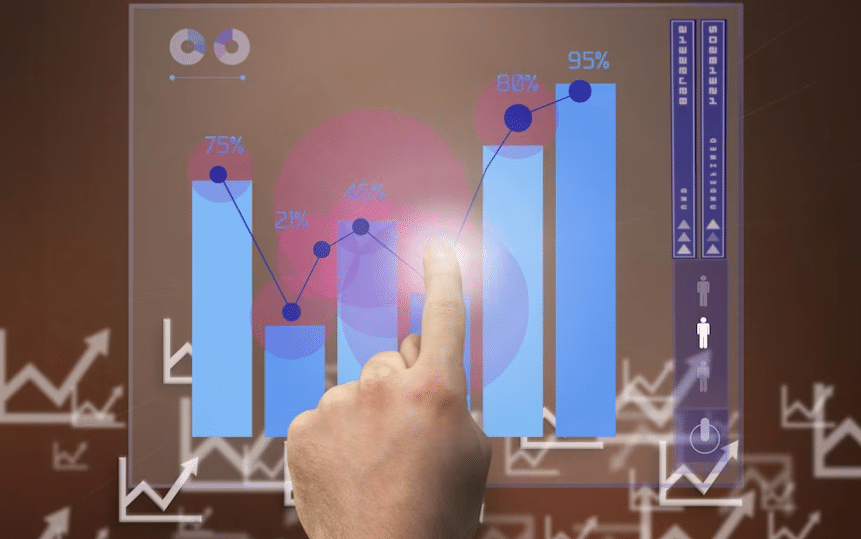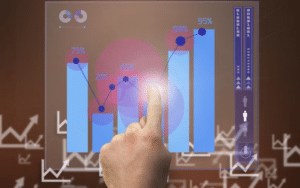In today’s data-driven world, organizations are increasingly turning to big data analytics to gain insights, make informed decisions, and stay competitive. Big data analytics refers to the process of examining large and complex datasets to uncover hidden patterns, correlations, and valuable information. It has applications across various industries, from healthcare to finance, marketing to manufacturing. In this comprehensive guide, we will explore the top seven big data analytics techniques that are transforming businesses and driving innovation.
The Big Data Landscape
The term “big data” refers to datasets that are too large and complex for traditional data processing methods. These datasets typically exhibit the three Vs of big data: volume, velocity, and variety.
- Volume: Big data involves the processing of massive amounts of data, often measured in terabytes, petabytes, or more.
- Velocity: Data is generated at an unprecedented speed, requiring real-time or near-real-time processing.
- Variety: Big data includes a variety of data types, including structured, semi-structured, and unstructured data.
The Top 7 Big Data Analytics Techniques
1. Descriptive Analytics
Descriptive analytics is the foundational step in big data analysis. It involves the examination of historical data to understand what has happened in the past. Key techniques in descriptive analytics include:
a. Data Visualization
Data visualization techniques, such as charts, graphs, and dashboards, help organizations present data in a visual format, making it easier to understand and identify trends.
b. Summary Statistics
Summary statistics like mean, median, and standard deviation provide a snapshot of the data’s central tendencies and spread.
c. Data Exploration
Exploratory data analysis (EDA) techniques, such as histograms and scatter plots, help analysts uncover patterns and relationships within the data.
2. Diagnostic Analytics
Diagnostic analytics focuses on why certain events or trends occurred. It delves deeper into data to identify causes and correlations. Techniques in diagnostic analytics include:
a. Root Cause Analysis
Root cause analysis identifies the underlying factors responsible for specific outcomes or issues.
b. Hypothesis Testing
Hypothesis testing involves statistical methods to validate or reject hypotheses about data relationships.
c. Regression Analysis
Regression analysis examines the relationship between one or more independent variables and a dependent variable, helping to understand causation.
3. Predictive Analytics
Predictive analytics uses historical data to make predictions about future events or trends. Key techniques in predictive analytics include:
a. Machine Learning
Machine learning algorithms, including regression, classification, and clustering, are used to build predictive models.
b. Time Series Analysis
Time series analysis examines data collected over time to make forecasts, often used in financial and demand forecasting.
c. Anomaly Detection
Anomaly detection identifies unusual patterns or outliers in data, which can be indicative of future issues or opportunities.
4. Prescriptive Analytics
Prescriptive analytics goes beyond predicting outcomes and provides recommendations on actions to take. Techniques in prescriptive analytics include:
a. Optimization
Optimization algorithms determine the best course of action to maximize or minimize a specific objective, such as cost or profit.
b. Decision Trees
Decision trees are used to model decision-making processes and provide recommendations based on various scenarios.
c. Simulation
Simulation models allow organizations to simulate different scenarios and assess the impact of decisions before implementation.
5. Text Analytics
Text analytics focuses on analyzing unstructured textual data, such as customer reviews, social media posts, and documents. Techniques in text analytics include:
a. Sentiment Analysis
Sentiment analysis determines the sentiment expressed in text data, helping organizations understand customer opinions and feedback.
b. Natural Language Processing (NLP)
NLP techniques process and analyze text data to extract meaningful insights, such as named entity recognition and topic modeling.
c. Text Classification
Text classification categorizes text data into predefined categories or labels, facilitating organization and analysis.
6. Geospatial Analytics
Geospatial analytics combines location-based data with other datasets to gain insights related to geography and location. Techniques in geospatial analytics include:
a. Geographic Information Systems (GIS)
GIS software allows organizations to visualize, analyze, and interpret geospatial data, such as maps and spatial relationships.
b. Location Intelligence
Location intelligence tools provide insights into customer behavior, market trends, and location-based decision-making.
c. Spatial Analysis
Spatial analysis techniques, like buffering and overlay, help organizations uncover patterns and relationships in geospatial data.
7. Streaming Analytics
Streaming analytics processes and analyzes real-time data streams, making it ideal for applications that require immediate insights. Techniques in streaming analytics include:
a. Complex Event Processing (CEP)
CEP engines analyze and correlate events from multiple data streams to identify meaningful patterns or events.
b. Real-time Dashboards
Real-time dashboards provide live visualizations and insights from streaming data, enabling organizations to make immediate decisions.
c. Anomaly Detection in Real Time
Anomaly detection algorithms can be applied to streaming data to identify anomalies or deviations from expected behavior as they occur.
Challenges and Considerations in Big Data Analytics
While big data analytics offers immense potential, it also presents challenges:
Data Quality
Ensuring data accuracy and reliability is crucial for meaningful analysis and decision-making.
Data Privacy and Security
Protecting sensitive data and complying with data privacy regulations are essential considerations.
Scalability
As data volume and complexity grow, organizations must have scalable infrastructure and tools.
Talent Shortages
The demand for data scientists and analysts often outstrips supply, making it challenging to find and retain skilled talent.
Cost of Implementation
Big data analytics initiatives can be costly, from infrastructure and tools to personnel and training.
Ethical Considerations
Ethical concerns may arise when dealing with data, especially when it involves personal or sensitive information.
Conclusion
Big data analytics has become a cornerstone of modern organizations, offering a wide range of techniques to gain insights and drive informed decision-making. From descriptive analytics for understanding historical data to predictive and prescriptive analytics for forecasting and decision-making, the top seven techniques covered in this guide empower organizations to harness the power of data. However, organizations must navigate challenges related to data quality, privacy, talent shortages, scalability, costs, and ethics to fully realize the potential of big data analytics. As technology continues to evolve, the landscape of big data analytics will continue to shape industries and drive innovation. Embracing these techniques is no longer an option but a necessity for organizations aiming to thrive in today’s data-driven world.

